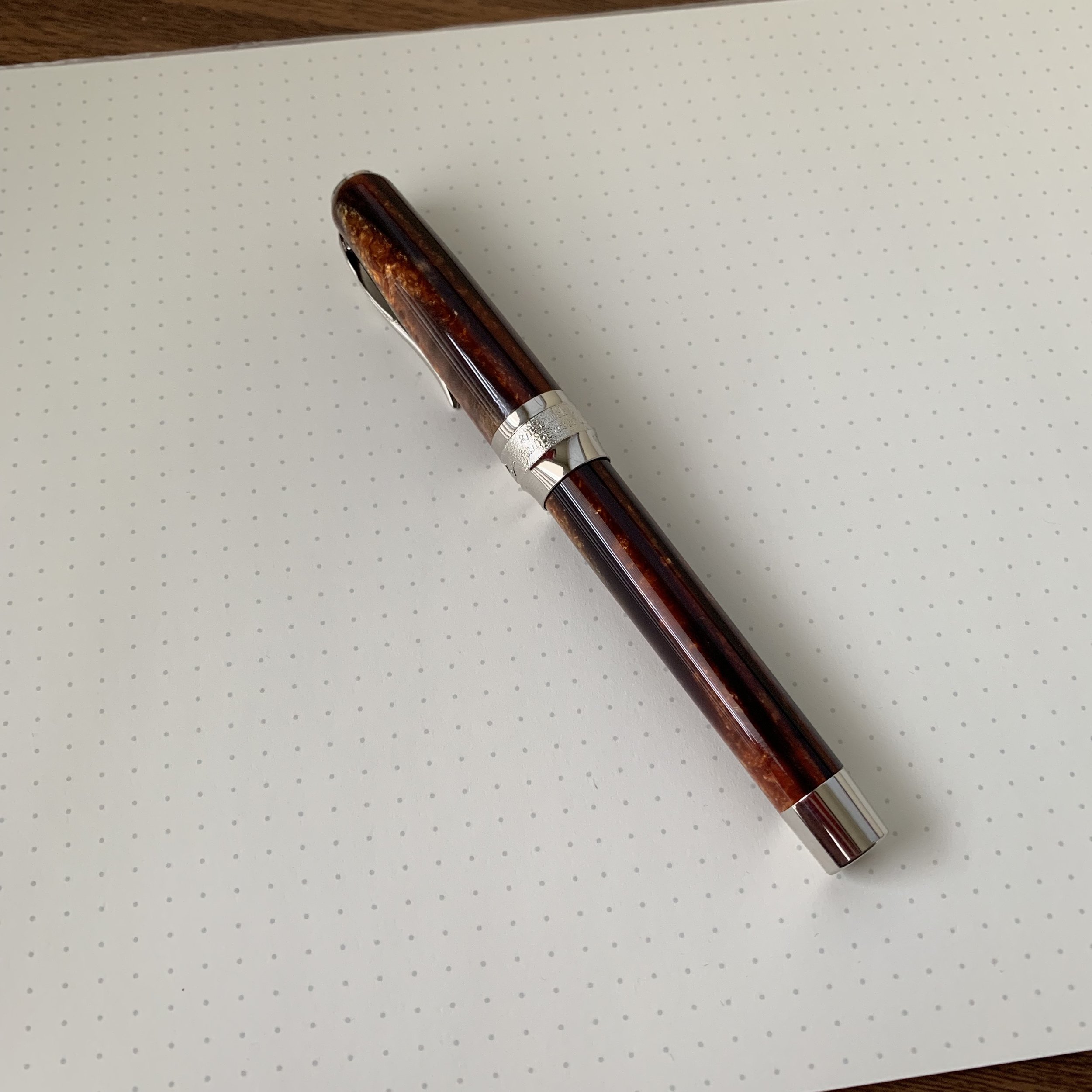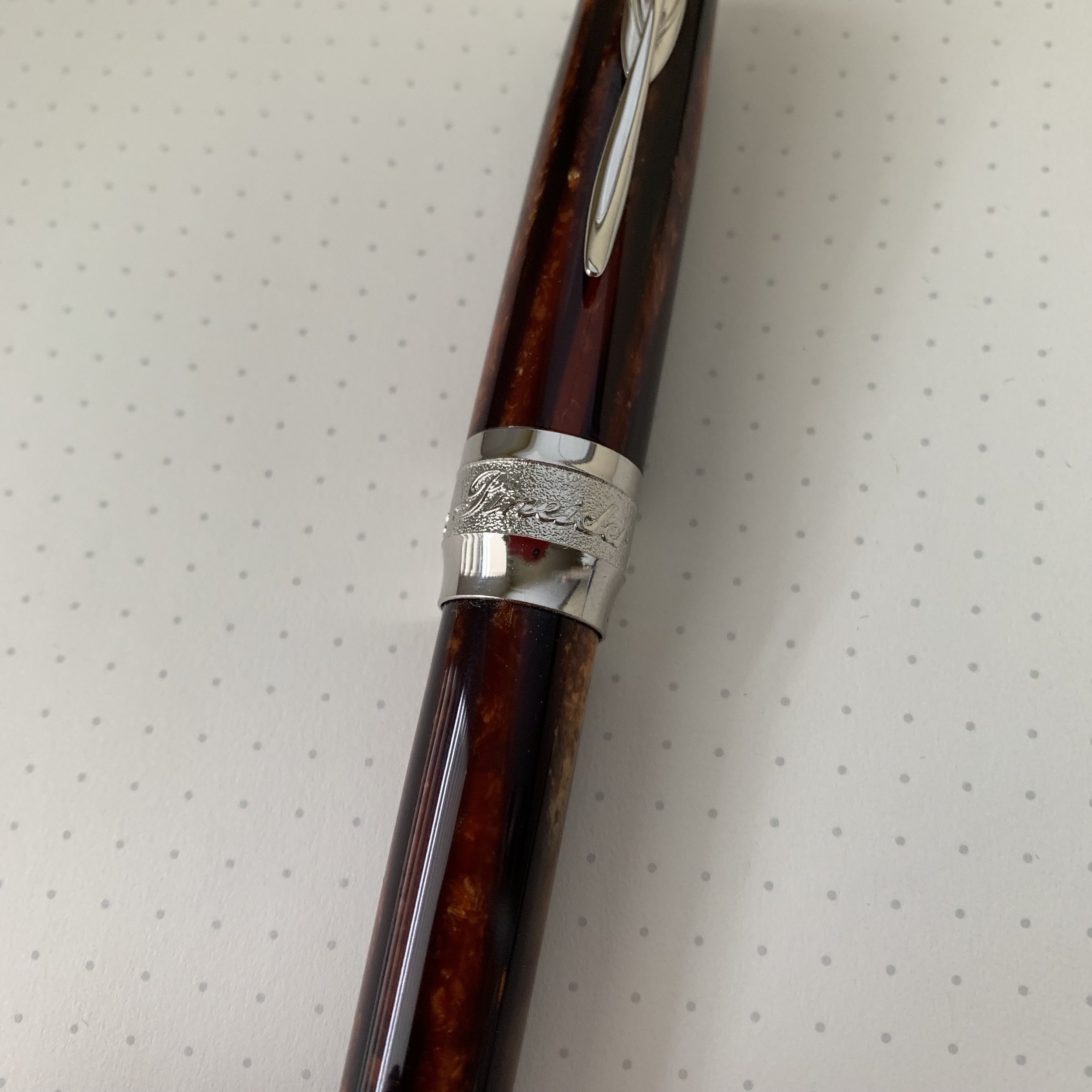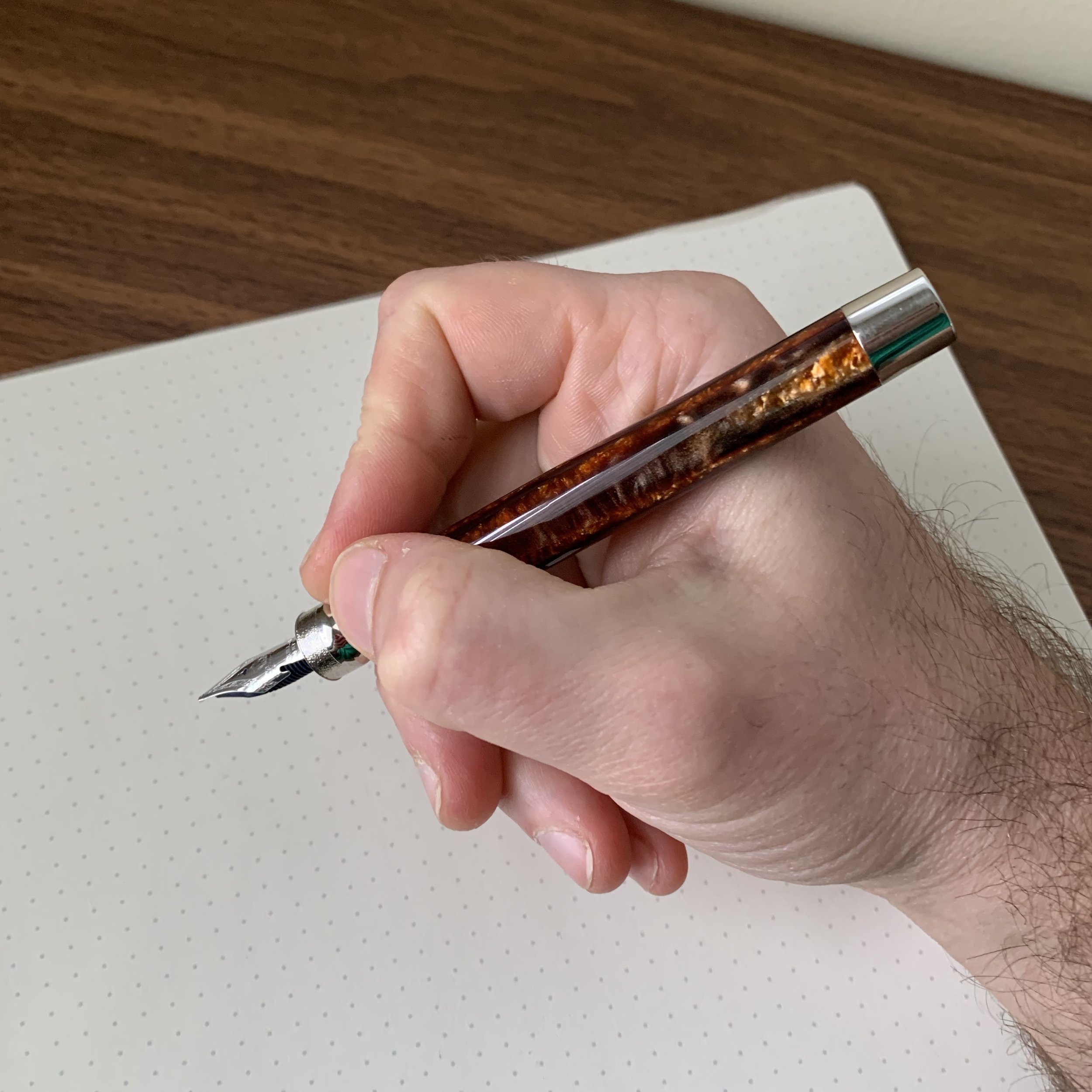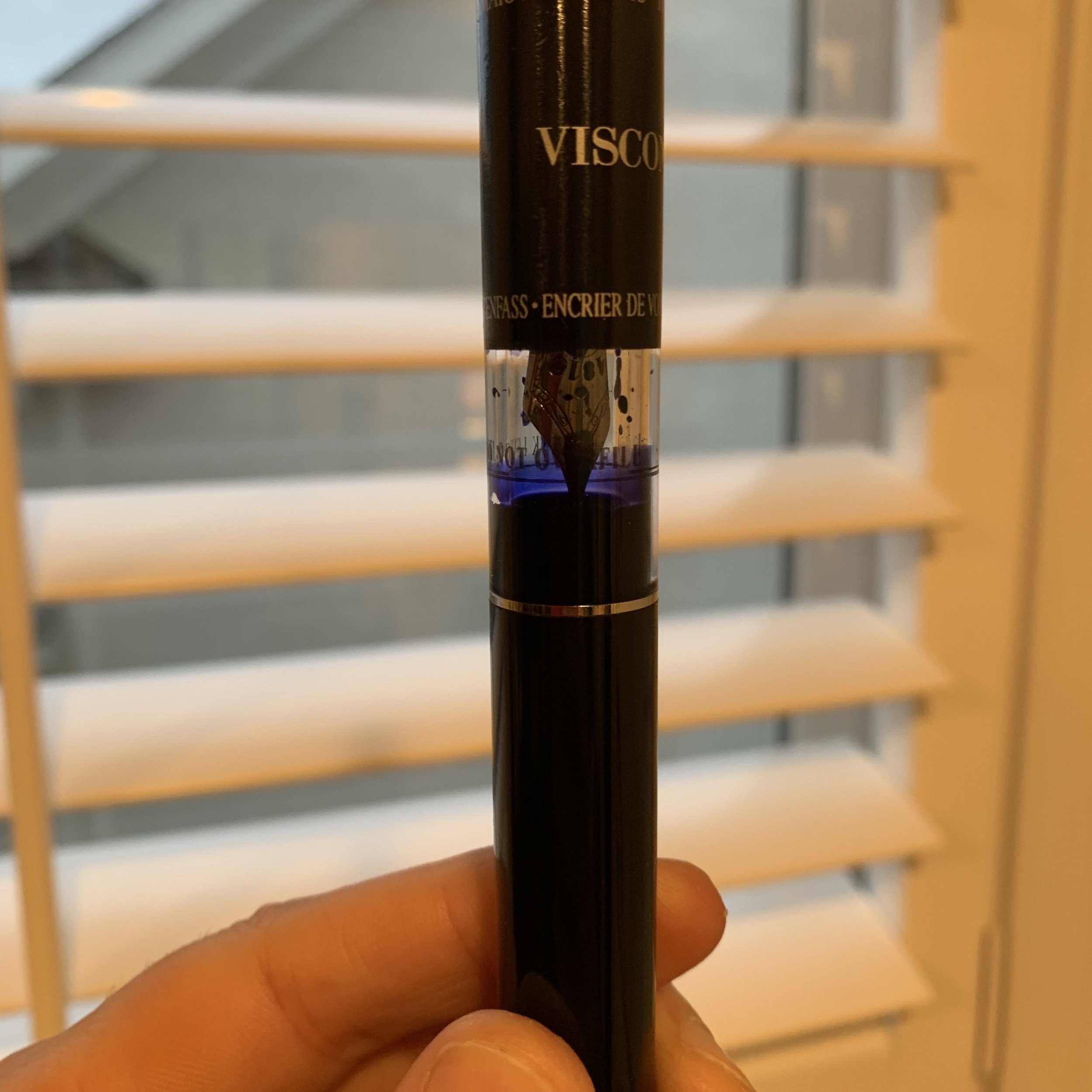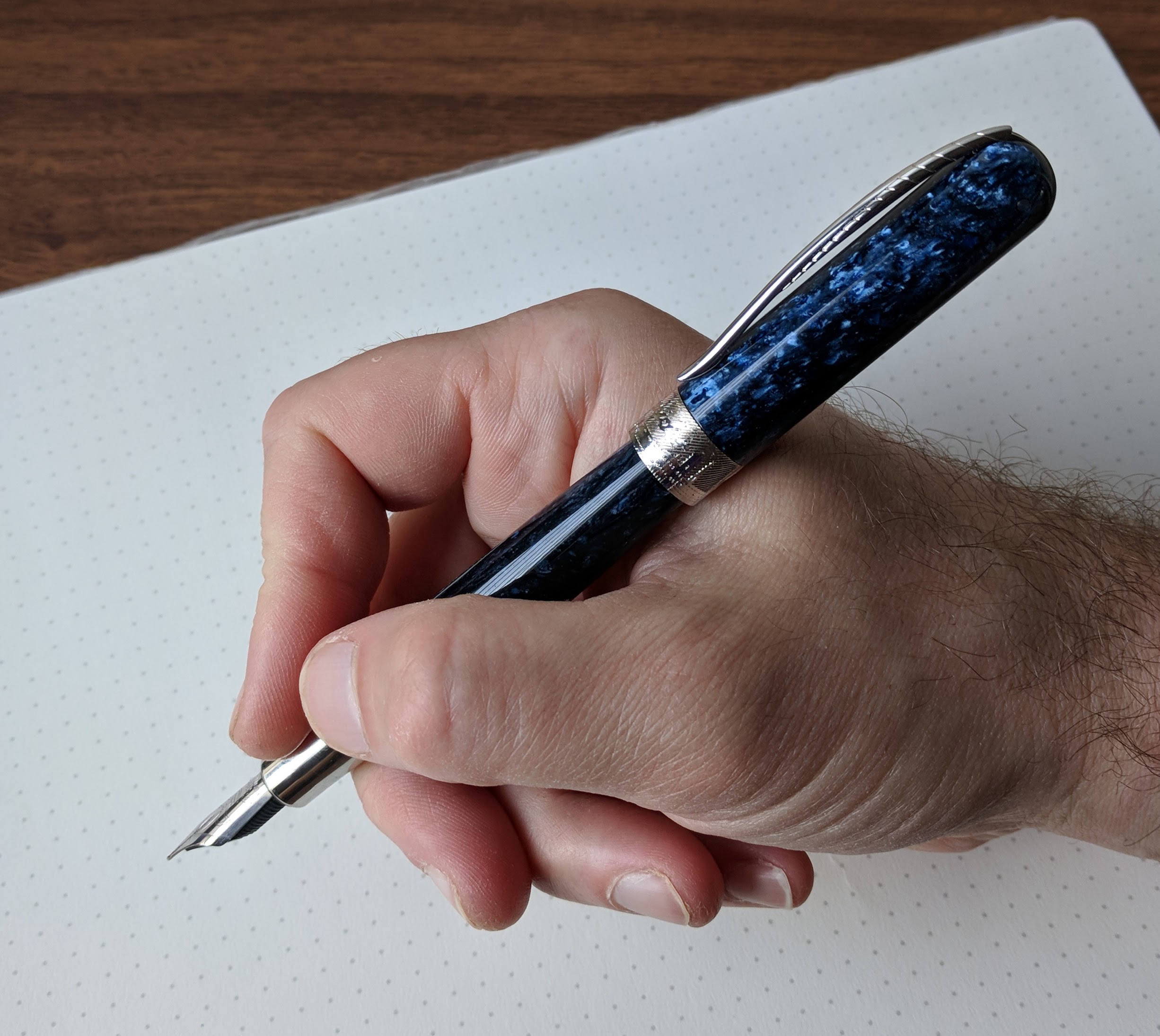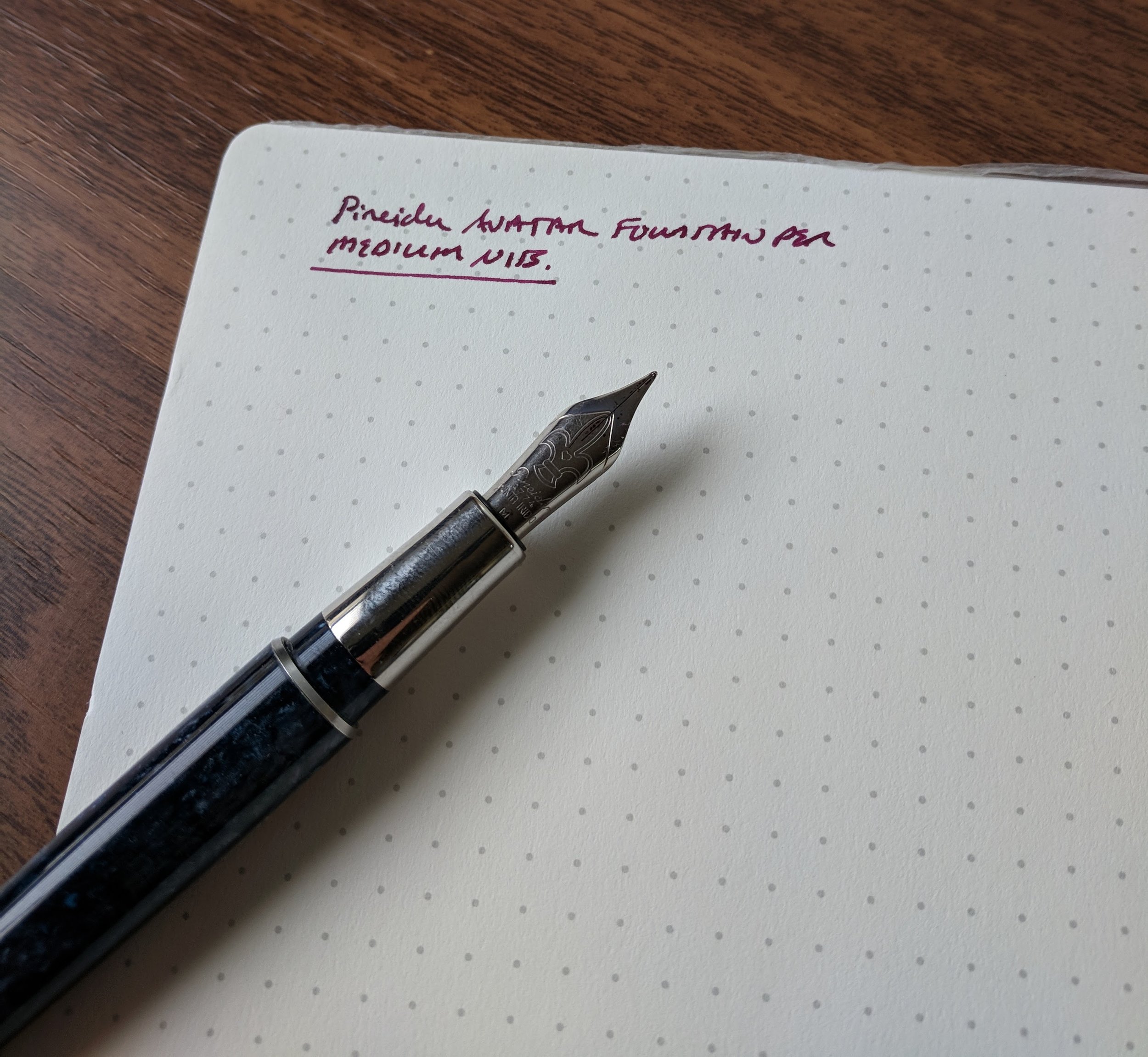Few materials have captivated the pen community in the same way as Arco celluloid, especially in pens made by the Italian pen manufacturers, and Omas in particular. After Omas folded, legacy company Armando Simoni Club/ASC Pens purchased the remaining Omas celluloid rod stock, and has released a series of pens in both the green and brown Arco celluloid under its own name and in partnership with Leonardo. (I own a Leonardo pen in green Arco Verde celluloid, and it’s gorgeous.)
But the rumor is that once ASC Pens’ current stock of Arco celluloid is gone, it’s gone. Celluloid is extremely time consuming and difficult to make, requiring a large (and expensive) investment of time and materials up front, followed by a years-long period of waiting for the celluloid to cure. As it turns out, however, companies don’t want the Arco “look” to go away (especially given the price Arco celluloid is commanding on the secondary market). This year, Pineider announced and released a limited edition “Arco Collection” pen in which Pineider attempted to duplicate the look of Arco celluloid using a layered acrylic.
Here you can see the striations in the acrylic. Lovers of vintage Arco celluloid will say it's not the same - and it’s not - but the material is beautiful in its own right. The cap features a twist magnetic closure, with a metal piston knob that allows you to post the pen using the magnet in the cap.
Pineider pens present a mixed bag for me. Functionally, the company makes a high-quality product. I previously reviewed the Pineider Avatar, which I enjoyed reviewing but the pen didn’t do it for me in terms of aesthetics, mainly because I found it a bit boring. Last year, Pineider released a new series of pens that I liked better, the La Grand Bellezza “Gemstone” collection, which featured new materials and came equipped with a new 14k “hyperflex” nib that Pineider dubbed the “Quill.” The new Arco Collection pens generally take the shape of the Grand Bellezza models, adding a piston filler and limited edition numbering.
There are 888 Arco collection pens, with each one numbered on the piston knob.
What everyone wants to know, of course, is how the new “Arco” acrylic compares to Arco celluloid. Short answer: it’s beautiful in its own right but not the same. Classic celluloid has a depth to it that’s practically impossible to duplicate, which is why it remains such a coveted material among pen collectors despite its many downsides. (i.e., it stains, it’s fragile, it’s flammable, and it’s expensive… I could go on, but you get the point.) Pineider’s Arco acrylic definitely captures some of the look of classic Arco, but is much darker and doesn’t quite get all of the gold and copper highlights found in the celluloid. There definitely will be a trade-off for the durability and lower price point of an acrylic pen.
The broad “Quill” nib on this Arco pen is more than a little stubbish.
For me, the Quill nib is what makes this pen (and the other Gemstone/Grand Bellezza pens) really shine. Pineider describes the nib as “hyperflex,” but as is often the case with so-called “flex” pens, there’s more than a bit of hyperbole involved. I’d describe the Quill nib as “true semi-flex,” in that you will get some significant line variation, especially in the narrower nib widths (EF-F). The stubbish broad nib I tested had a nice bounce to it, and really put a lot of ink on the page. To me, the Pineider nib is certainly “flexier” than Aurora’s flex nib, but you still shouldn’t expect a vintage-style flex pen.
Takeaways and Where to Buy
Pineider has my attention more than than they did when they first appeared on the scene. After spending two weeks with the Arco pen, I could see myself picking up one of the Grand Bellezza “Gemstone” pens just to have a Quill nib in my collection, probably opting either for a broad or an extra fine. The standard “Gemstone” pens have an MSRP of just under $500, with an actual retail price that typically sits just under $400. Vanness, however, is currently running a 40% off promotion in which the cost of the Pineider La Bellezza fountain pen with the Quill nib is just $298. That’s a very good price on an excellent pen, especially for a semi-flex nib of this quality.
As a limited edition with a piston filler, the Arco collection pens are more expensive, with MSRP at around $700 and retail price between $500-600. They’re also selling quickly, so you’re probably going to have to hunt around to find one. Vanness Pens is currently sold out, and they may or may not get more, depending on availability.
Many thanks to my sponsors at Vanness Pens for loaning me this Arco Collection pen to review. It made for an enjoyable two weeks between the Baltimore and Arkansas pen shows!
Disclaimer: This post contains links to paid sponsors and affiliates. Vanness Pens loaned me pen featured in this review at no charge.
